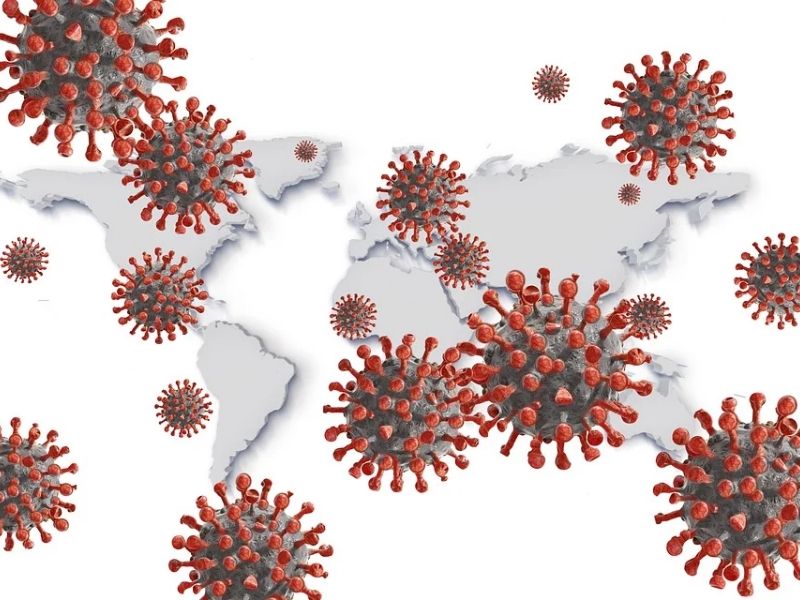Although the three-weeks national lockdown of the Indian economy ordered by the Central government on March 25 is undoubtedly well intentioned, it is likely to prove a good prescription overdose — a cure that’s worse than the disease, in the memorable phrase of US President Donald Trump. Admittedly, America’s blundering president who has a marked tendency to shoot first and investigate later, is not the model leader from whom we can draw inspiration on ways and means to manage the global coronavirus pandemic, which during the past three months since it claimed its first victim in the Hubei province of China in January has spread across the world with lightning speed to claim 22,028 lives and infected 487,452 people in 198 countries (March 26). In India it has claimed 14 lives and infected an estimated 695 citizens while spreading panic and chaos.
India is not the first country to declare a national emergency and impose a countrywide lockdown which in effect stops all citizens – except a few engaged in delivering essential services – from going to work and confines every citizen to her home for 21 days from March 25. As explained by prime minister Narendra Modi in a nationwide television and radio broadcast to the citizenry on March 24, the lockdown is necessary because the corona virus, aka Covod-19, is highly contagious, and causes severe respiratory problems with a high likelihood of death, especially in ailing elderly people. Therefore social distancing, minimising contact with strangers, avoiding crowds and workplaces — because Covid-19 is initially asymptomatic – can slow down the spread of this new disease for which a curative vaccine is yet to be discovered. The pervasive fear in all countries worldwide, including the US, UK, Italy, France, Singapore, Indonesia and Hong Kong which have all declared national lockdowns of varying duration, is that Covi-19 may spread so quickly that the number of serious hospitalisation cases may overwhelm their health infrastructure.
National lockdowns have shown encouraging results in China, Singapore and especially in South Korea and Singapore where it’s been combined with extensive testing and isolation of infected patients to flatten the curve of new infections. Therefore it’s indisputable that a national lockdown as ordered by the Central government is necessary. However misgivings on the duration of the lockdown and adequacy of the official relief package amount of Rs. 1.70 lakh crore announced by Union finance minister Nirmala Sitharaman on March 26 to cushion the massive socio-economic disruption, are legitimate.
In this connection, it’s important to appreciate that the socio-economic profile of India is vastly different from the developed OECD countries and China. Over 90 percent of India’s 420 million workforce is employed or self-employed in the informal sector. These citizens subsist on very low wages and incomes with over 100 million workers among them being migrant labour with entire families surviving on their daily wages. Moreover the size of the average ill-equipped Indian home is 504 sq ft with a third less than 258 sqft. Forcing 400 million citizens to suffer loss of employment, daily income and stay “at home” 24×7 in ill-ventilated squalid conditions is arguably a cure worse than the disease. A massive income transfer scheme for over 400 million citizens for the duration of the lockdown and review of its duration its length is imperative.
In the March issue of EducationWorld, your editors submitted a detailed schema under which by reducing establishment and defence expenditure, slashing non-merit subsidies and accelerated privatisation of public sector enterprises and also imposing modest cesses on direct taxpayers, the Central government could raise Rs. 8 lakh crore for investment in public education and health (see https://www.educationworld.in/union-budget-2020-21-small-change-for-human-capital-development/). In light of the Covid-19 black swan national emergency, this amount should instead be urgently mobilised, divided and distributed among 150 million (of a total 250 million) lowest income households countrywide under a direct money transfer into their bank accounts. This will provide them a basic income of Rs.4,444 per month for the next 12 months. In addition their food grains ration quotas under the national public distribution system should be immediately doubled – Food Corporation of India has more than adequate stocks rotting its godowns. Putting purchasing power into the hands of lowest income households for the next year will tide over the populace for one year and kickstart the engines of the economy.
Meanwhile the lockdown period could be shortened depending on the situation, but not extended beyond April 15 under any circumstances. Restarting the economy on which hundreds of millions of lives depend is top priority. Subsequently while every effort should be made to save lives, the normative law of survival of the fittest should be allowed to operate. True millions of lives may be lost, but hundreds of millions of citizens will be saved from penury and starvation. It’s a sacrifice that has to be made, if necessary. That’s the natural advantage of a young nation with a billion plus population.
Dilip Thakore
Posted in National, News

























